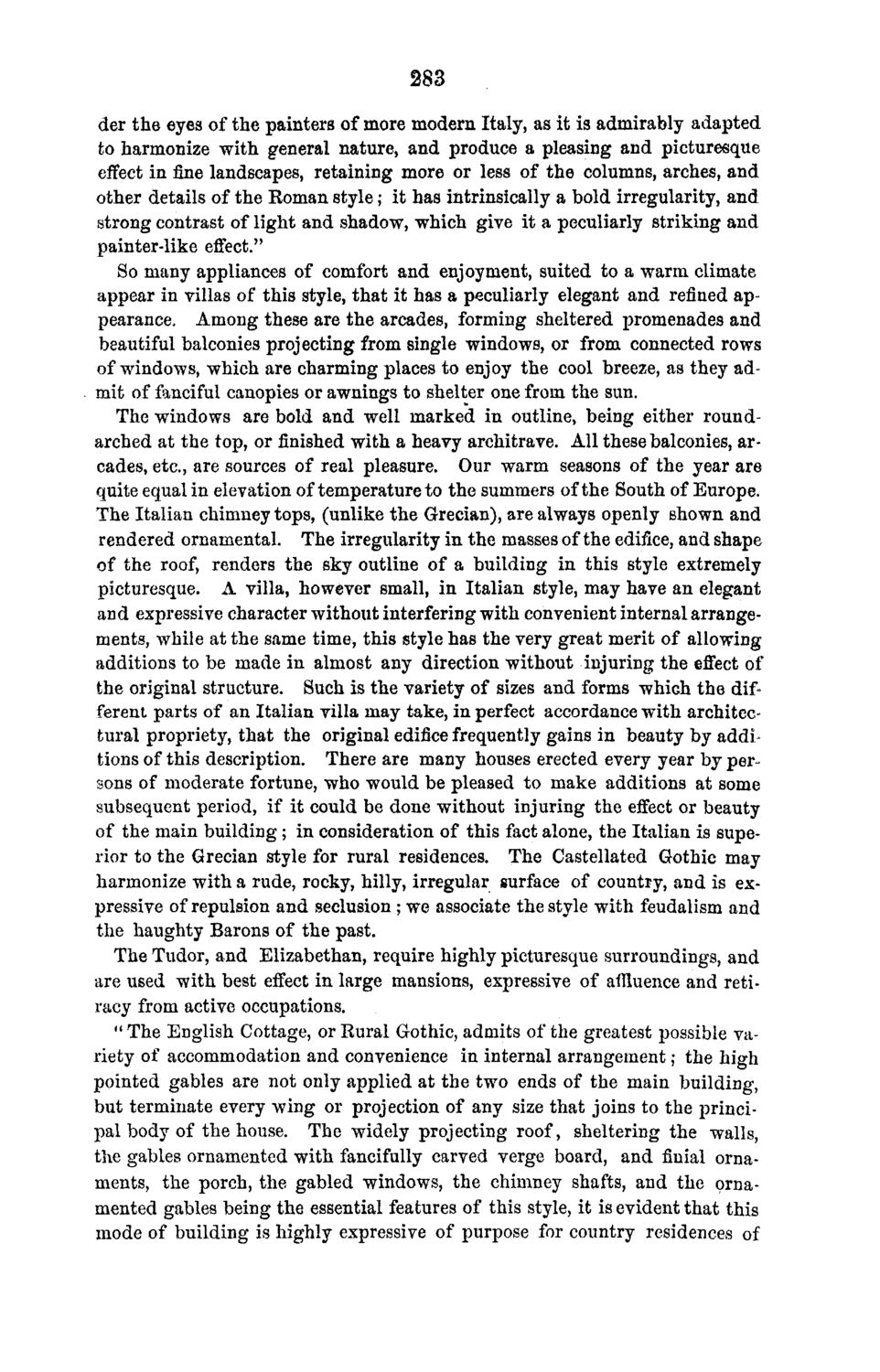| |
| |
Caption: Board of Trustees Minutes - 1870
This is a reduced-resolution page image for fast online browsing.

EXTRACTED TEXT FROM PAGE:
283 der the eyes of the painters of more modern Italy, as it is admirably adapted to harmonize with general nature, and produce a pleasing and picturesque effect in fine landscapes, retaining more or less of the columns, arches, and other details of the Roman style; it has intrinsically a bold irregularity, and strong contrast of light and shadow, which give it a peculiarly striking and painter-like effect.'' So many appliances of comfort and enjoyment, suited to a warm climate appear in villas of this style, that it has a peculiarly elegant and refined appearance, Among these are the arcades, forming sheltered promenades and beautiful balconies projecting from single windows, or from connected rows of windows, which are charming places to enjoy the cool breeze, as they admit of fanciful canopies or awnings to shelter one from the sun. The windows are bold and well marked in outline, being either roundarched at the top, or finished with a heavy architrave. All these balconies, arcades, etc., are sources of real pleasure. Our warm seasons of the year are quite equal in elevation of temperature to the summers of the South of Europe. The Italian chimney tops, (unlike the Grecian), are always openly shown and rendered ornamental. The irregularity in the masses of the edifice, and shape of the roof, renders the sky outline of a building in this style extremely picturesque. A villa, however small, in Italian style, may have an elegant and expressive character without interfering with convenient internal arrangements, while at the same time, this style has the very great merit of allowing additions to be made in almost any direction without injuring the effect of the original structure. Such is the variety of sizes and forms whiGh the different parts of an Italian villa may take, in perfect accordance with architectural propriety, that the original edifice frequently gains in beauty by additions of this description. There are many houses erected every year by persons of moderate fortune, who would be pleased to make additions at some subsequent period, if it could be done without injuring the effect or beauty of the main building; in consideration of this fact alone, the Italian is superior to the Grecian style for rural residences. The Castellated Gothic may harmonize with a rude, rocky, hilly, irregular surface of country, and is expressive of repulsion and seclusion ; we associate the style with feudalism and the haughty Barons of the past. The Tudor, and Elizabethan, require highly picturesque surroundings, and are used with best effect in large mansions, expressive of affluence and retiracy from active occupations. " The English Cottage, or Rural Gothic, admits of the greatest possible variety of accommodation and convenience in internal arrangement; the high pointed gables are not only applied at the two ends of the main building, but terminate every wing or projection of any size that joins to the principal body of the house. The widely projecting roof, sheltering the walls, the gables ornamented with fancifully carved verge board, and finial ornaments, the porch, the gabled windows, the chimney shafts, and the ornamented gables being the essential features of this style, it is evident that this mode of building is highly expressive of purpose for country residences of
| |